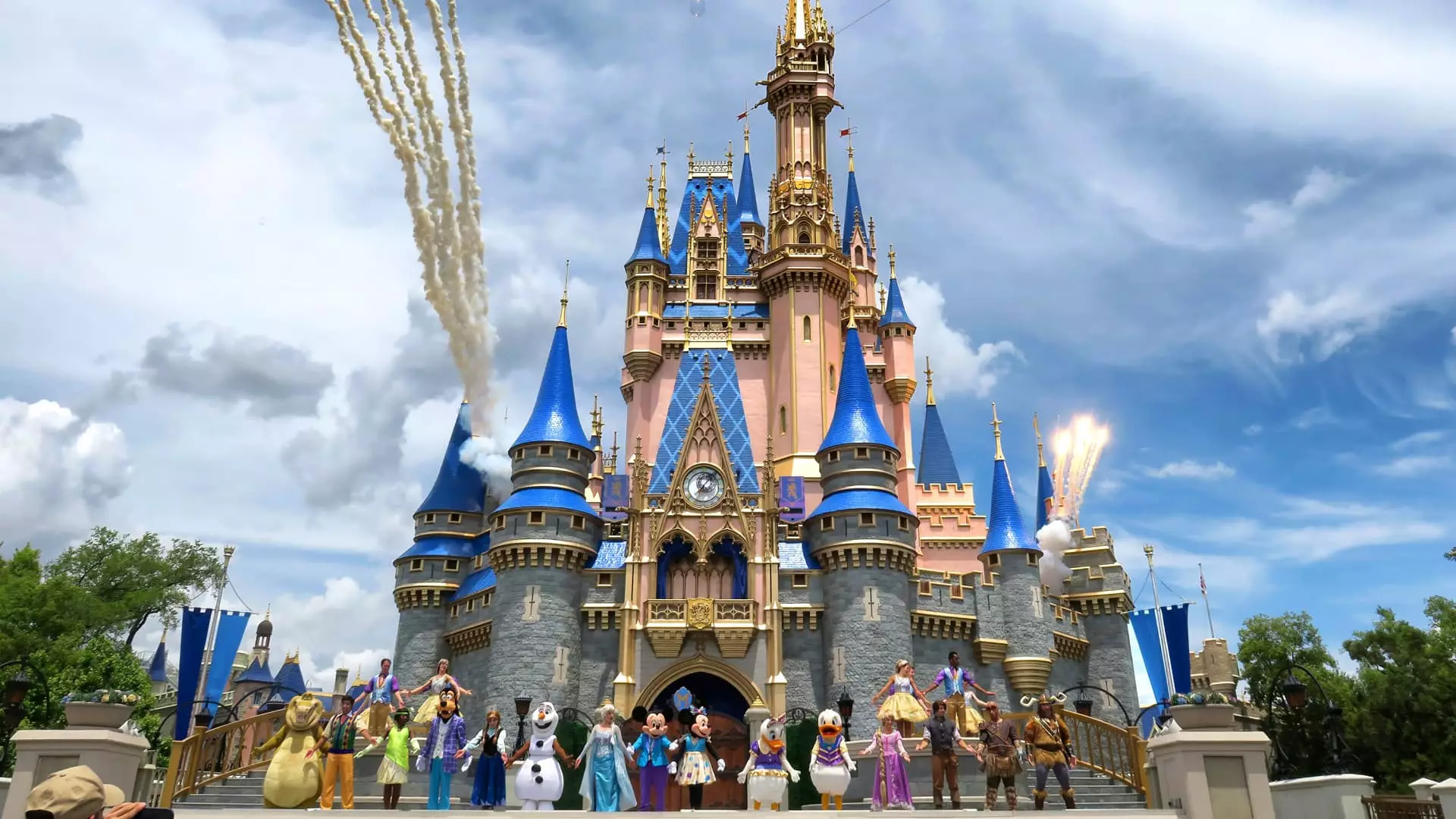As the United States emerges from the heavy shadow of the pandemic, the travel sector demonstrates remarkable resilience, particularly in domestic travel. With air travel rebounding to levels reminiscent of pre-pandemic times, a notable trend has emerged: the impact of inflation on consumer spending habits. With more families planning to incur debt for their summer vacations, it’s evident that Americans are still inclined to travel, albeit with a more cautious financial outlook. This willingness to spend, despite economic pressures, indicates that the allure of travel remains potent, even if it is approached with calculated decision-making.
However, not all sectors within the travel industry are benefiting equally. Recent financial reports from Disney reveal that the theme park segment is experiencing a downturn, attributed to what officials describe as a “softening consumer environment.” The company’s domestic parks, including the iconic Walt Disney World and Disneyland, reported a decrease of 6% in operating profits, despite a revenue increase of 3% year-over-year. This paradox highlights a significant shift in consumer behavior; as families navigate their entertainment options amidst financial strain, theme parks are facing increased competition, forcing brands to rethink their strategies.
In a similar vein, Comcast, the parent company of Universal Studios, recorded an alarming 11% drop in theme park revenue, also linked to declining attendance figures in the same time frame. Disneyland Resort President Ken Potrock aptly summarized the situation, stating that consumers have numerous choices and are now making more intentional decisions about their entertainment expenditures. The challenge ahead for theme parks is monumental: they must not only remain competitive but also enhance their understanding of customer preferences.
While the appeal of Disney parks remains strong—the organization reported attracting 142 million visitors globally in 2023—the rising costs associated with visiting these parks cannot be overlooked. The average price of a single-day ticket to Walt Disney World has increased by 5% annually over the past decade. From 2014 to 2024, ticket prices soared by a staggering 56%, significantly outpacing the national inflation rate of 32%. Even though the lower-priced ticket options have remained stable since 2019, the overall price structure has created a notable barrier for budget-conscious families.
The average one-day ticket price at Walt Disney World has climbed to $154, with peak travel times seeing Magic Kingdom tickets priced as high as $189. Such figures lend credence to the argument that these experiences may be straying beyond the reach of many American families, who are increasingly feeling the pinch of rising costs. As noted by industry analysts, such pricing strategies may be a necessary response to a disappointing decade in the realm of linear television, where Disney has faced significant challenges.
As theme parks continue to grapple with economic realities, a pressing question emerges: Is a Disney vacation becoming unaffordable for the average American family? The competitive nature of the entertainment market suggests that parks must adapt. There is an urgent need to balance premium experiences with accessibility, ensuring that the magic of Disney remains available to a diverse audience.
For families who once thrived on the nostalgia and excitement encapsulated within Disney parks, this economic shift could be disheartening. It highlights the necessity for theme parks to innovate and create enticing offerings that resonate with a more price-sensitive demographic. Whether through dynamic pricing strategies, promotional packages, or targeted audience engagement, parks must seek pathways to inclusivity.
The current dynamics of the U.S. theme park industry reveal a complicated relationship between consumer sentiment and economic constraints. While air travel and domestic tourism have shown a robust recovery, theme parks such as Disneyland and Walt Disney World are treading carefully amid fluctuating demand. As operators respond to the dual pressures of competition and cost, the ultimate challenge remains: ensuring that these beloved destinations do not lose their charm and accessibility for the everyday traveler. The ongoing evolution of consumer preferences necessitates a strategic re-evaluation of how theme parks attract and retain visitors, forging a path that honors both nostalgia and affordability.


Leave a Reply